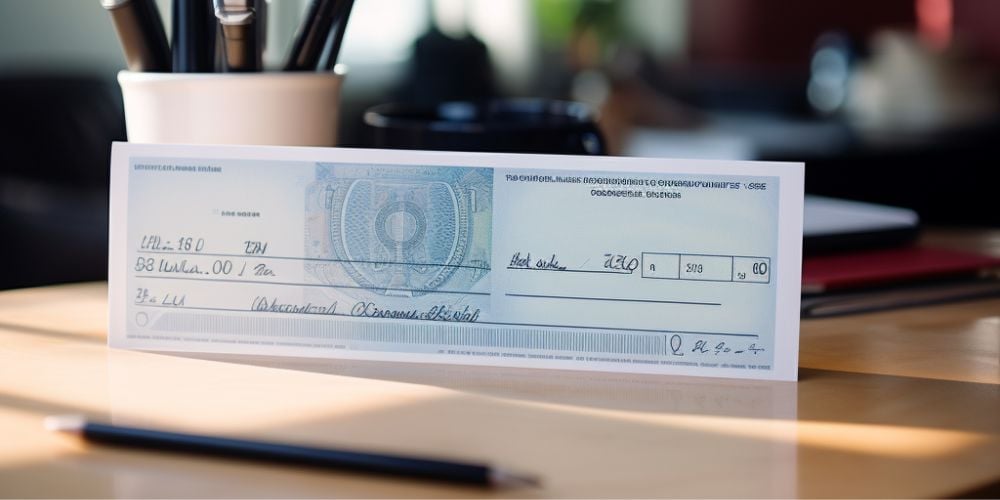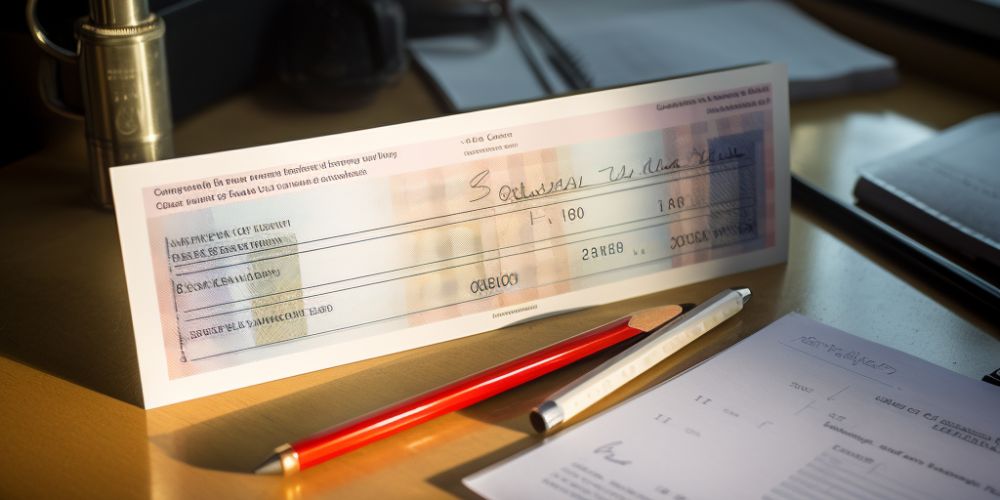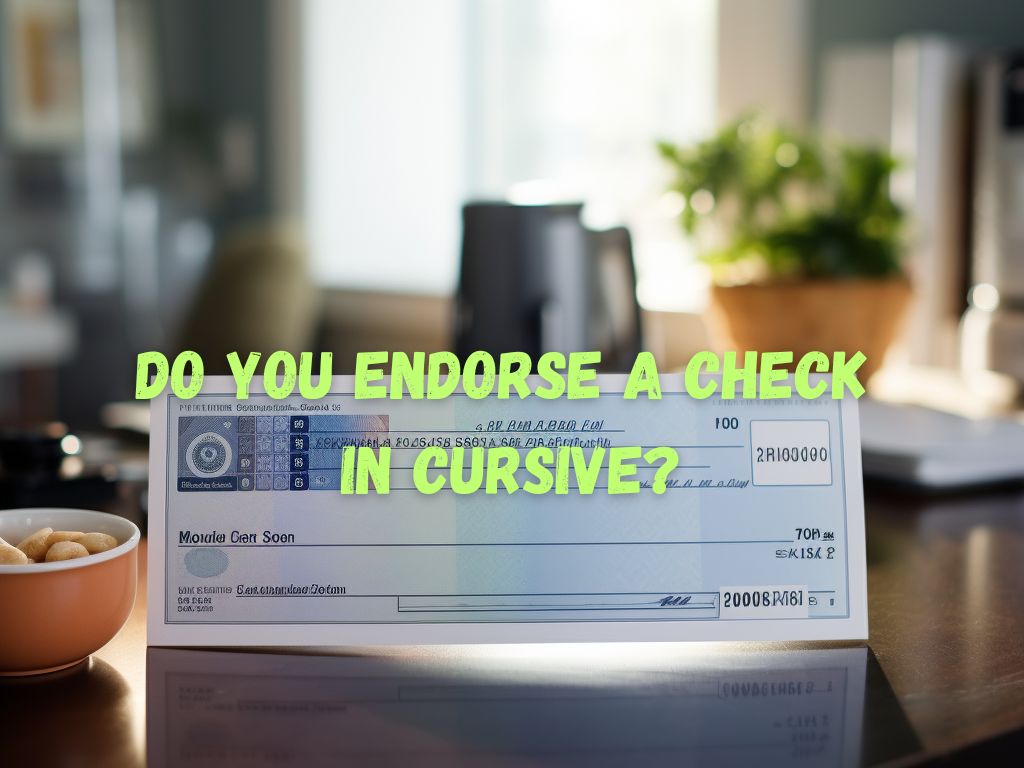When it comes to handling financial matters, ensuring the security and legality of transactions is of utmost importance.
Endorsing a check is a crucial step in the process, as it confirms the payee’s intent to transfer the funds.
But what about the style of handwriting used for endorsement? Should one endorse a check in cursive, or is it acceptable to use other forms of handwriting?
In this article, we’ll explore the practice of check endorsement and delve into the question of whether cursive handwriting still holds relevance in this digital age.
What is Check Endorsement?
Before we delve into the use of cursive in check endorsement, let’s establish a clear understanding of what check endorsement entails.
Check endorsement refers to the act of signing the back of a check to authorize its payment. It serves as a legal safeguard to protect the payee and ensure the rightful recipient receives the money.
There are three main types of endorsements: blank endorsements, restrictive endorsements, and special endorsements.

Do You Endorse A Check In Cursive?
The debate surrounding whether to endorse a check in cursive stems from the continuing evolution of handwriting practices and the rise of digital endorsements.
Historically, cursive handwriting has been the preferred style for endorsing checks, symbolizing professionalism and tradition.
However, with the advent of technology and the shift towards digital transactions, the relevance of cursive endorsement has come into question.
Pros and Cons of Endorsing a Check in Cursive
Before we make a decision on whether to endorse checks in cursive, let’s weigh the pros and cons.
Pros of Endorsing a Check in Cursive
Professional Appearance:
Cursive handwriting is considered a classic style that exudes a sense of professionalism. When it comes to handling financial matters, a cursive signature can convey a sense of expertise and attention to detail.
Security Against Check Fraud:
Cursive signatures can add an extra layer of security against check fraud, as they are more challenging to replicate than block letters or printed names. This is especially important for high-value checks or transactions.
Personalization:
Cursive signatures are often unique and personal as compared to block letters or printed names. They can also be more difficult to forge, as forgers would need to mimic the specific style and nuances of the signature.
Cons of Endorsing a Check in Cursive
Legibility Issues:
Cursive handwriting can be challenging to read, especially when individuals have unique or intricate styles. This can cause inconvenience and potential misunderstandings or delays in processing checks.
It can also lead to errors, such as depositing the check into the wrong account.
Inconvenience and Practicality Concerns:
With the rise of digital transactions and remote check depositing, endorsement practices have evolved.
While cursive endorsements were once the norm, non-cursive endorsements such as block letters or printed names have gained popularity due to their simplicity and ease of recognition.
Lack of Consistency:
Cursive signatures can vary widely depending on the individual’s style and mood at the time of signing. This can lead to inconsistencies in the signature, making it more difficult for banks and financial institutions to verify the endorsement.
While cursive endorsements continue to be a common practice, evolving technologies and alternative methods have made non-cursive endorsements more prevalent. The key to proper check endorsement is to follow the guidelines, ensuring clarity, security, and adherence to legal requirements.
By staying informed and adapting to changing practices, we can confidently endorse our checks, regardless of the style of handwriting we choose to use.

Guidelines for Proper Check Endorsement
Regardless of whether you choose to endorse a check in cursive or not, there are certain guidelines and best practices to ensure your endorsement is valid and secure.
Basic steps to endorse a check:
Sign the back of the check in the designated endorsement area.
Include the payee’s name and any additional instructions, if necessary.
Best Practices for Endorsing a Check
Regardless of whether you choose to endorse a check in cursive or not, there are certain best practices to ensure your endorsement is valid and secure.
Sign the Back of the Check:
Ensure you sign the back of the check in the designated endorsement area, as failure to do so can result in the check being rejected or delayed.
Use Permanent Ink:
Use a pen with permanent ink to prevent tampering.
Write Clearly:
Ensure your signature is clear, consistent, and easily identifiable. If your cursive handwriting is not legible, consider using alternative endorsement methods or printing your name in addition to your signature.
Avoid Alterations:
Avoid overwriting or altering the endorsement area to maintain clarity and prevent confusion.
Alternative methods for endorsement:
Digital endorsements:
Many banks and financial institutions now offer the option to deposit checks remotely using mobile apps or online platforms. In such cases, the endorsement is typically done electronically by capturing an image of the check.

Frequently Asked Questions (FAQs)
Is it necessary to endorse a check in cursive?
While there is no legal requirement to endorse a check in cursive, it remains a common practice. However, alternatives such as signatures in block letters or printed names are also acceptable.
Can I use printed or block letters for endorsement?
Yes, using printed or block letters for endorsement is permitted. The primary concern is to ensure your endorsement is clear, consistent, and easily identifiable.
Are there any legal requirements for check endorsements?
The legal requirements for check endorsements vary by jurisdiction. However, in general, an endorsement should be signed and include the payee’s name.
How can I prevent check fraud when endorsing a check?
To prevent check fraud, it is essential to safeguard your checks, use secure and traceable mail services when mailing them, and promptly reconcile your bank statements to detect any unauthorized transactions.
Conclusion
As we navigate the changing landscape of financial transactions, the question of whether to endorse a check in cursive or not becomes a matter of personal preference and practicality.
While cursive endorsements can still convey a sense of tradition and security, evolving technologies and alternative methods have made non-cursive endorsements more prevalent.
The key is to follow the guidelines for proper check endorsement, ensuring clarity, security, and adherence to legal requirements.
By staying informed and adapting to changing practices, we can confidently endorse our checks, regardless of the style of handwriting we choose to use.


 Tags:
Tags:










